5° to 8° greater than the contralateral foot In a grade 2 foot, the hoofpastern axis is steep and slightly brokenforward Growth rings of the hoof are wider at the heel than at the toe, and after trimming excess hoof wall from the heel, the heel may not touch the ground A grade 3 clubfoot is a more severe deformity, which has a brokenforward In the horse, hoof growth is dictated in large part by weight distribution If a horse puts more weight on the inside of a hoof, the blood is pushed to the opposite side of the foot causing faster growth and wearing down the weighted surface at a faster rate With respect to the club foot, the heel of the affected foot grows faster and the hoofSome of the best dogs and horses that I have ever owned have been ones that were not purebred pinterestpinit
Equine Podiatry Dr Stephen O Grady Veterinarians Farriers Books Articles
Grade 3 club foot horse
Grade 3 club foot horse-The problem with club foot is abnormal forces generated in the hoof The natural concussion dampening of the lower limb is lost Grade 1 Three degrees greater angle than the opposite, pronounced coronary band Grade 2 Growth rings, broken forward Grade 3 Dorsal hoof wall is obviously concave Grade 4 Angle greater than 80 degrees willHe is pretty close to a grade 3, he also has rotation in that joint I have had him just over a week and have been medicating the raging thrush in all 4 feet, now that he took off the nasty old frog I can actually get it where it needs to go



Www Theneaep Com S Xia1nkm5hdp7yhwyucxfn39k42qa8m
Link Casey, Instructor at Casey & Son Horseshoeing School Unedited REAL footage featuring a horse brought to the school Explaining the angles, the shoulder Q How should I treat a grade 3 or 4 laminitic club foot?A grade 3 club foot is a more severe deformity, which has a brokenforward hoofpastern axis and a mild dish is present in the dorsal hoof wall The growth rings are twice as wide at the heels as those at the toe, and, radiographically, there is demineralization and
Here's another scenario Let's say you have a grade 3 club foot on each of two foals who are prospective speed or sport horses Both hooves have a 62° hoof angle The first foal's club foot has a slight dish in the front, a high PA of 12°, and a BA of 50° That foot might be a candidate for check ligament desmotomyAny club foot that has been around a while will have a sensitive, unused, underdeveloped frog/digital cushion You can fix everything else and still have the back of the foot too sensitive for the horse to land on, which will cause the shortened stride and resulting club foot on its own – another vicious cycle Or they can use a grading system ranging from Grade 1—a mildly upright hoof with a hoof angle 35 degrees steeper than the opposite foot—to the
Great club foot case with De Cillo Equine Clinic, horse was present at the De Cillo Equine Clinic very very lame ,and was diagnosed with laminitis and recommended euthanasia by the two previous vets! Club feet are surprisingly common, with up to 60% of the domestic horse population exhibiting at least minor characteristics Several theories address the potential causes, ranging from a genetic predisposition, to hoof or body injury, to improper trimming and/or shoeing Stay uptodate on the latest news about your horse's health with FREE newsletters from TheHorsecom Topics include Nutrition, Soundness & Lameness, Equine Behavior, Farm & Barn, Older Horse Care



Www Theneaep Com S Xia1nkm5hdp7yhwyucxfn39k42qa8m



Www Theneaep Com S Xia1nkm5hdp7yhwyucxfn39k42qa8m
The vet's report states "has a Grade 3 systolic murmur, audible over the rt side albeit and a club foot I was not as concerned about the heart murmur as much as the club foot, as I prefer my horses to be barefoot as much as possible and did not want to get into corrective shoeing etc Anyway, even without the club foot, I would not have While Grade 3 and 4 are extreme and the horses are most likely very lame, Grade 2 and 3 are not that uncommon I will mostly focus on these two grades How do these club hooves happen or develop? A grade horse is a horse of unknown lineage—a crossbred Saying a horse is a grade horse is the equivalent of a dog being a "mutt" I'm not using the term "mutt" in a derogatory way either!
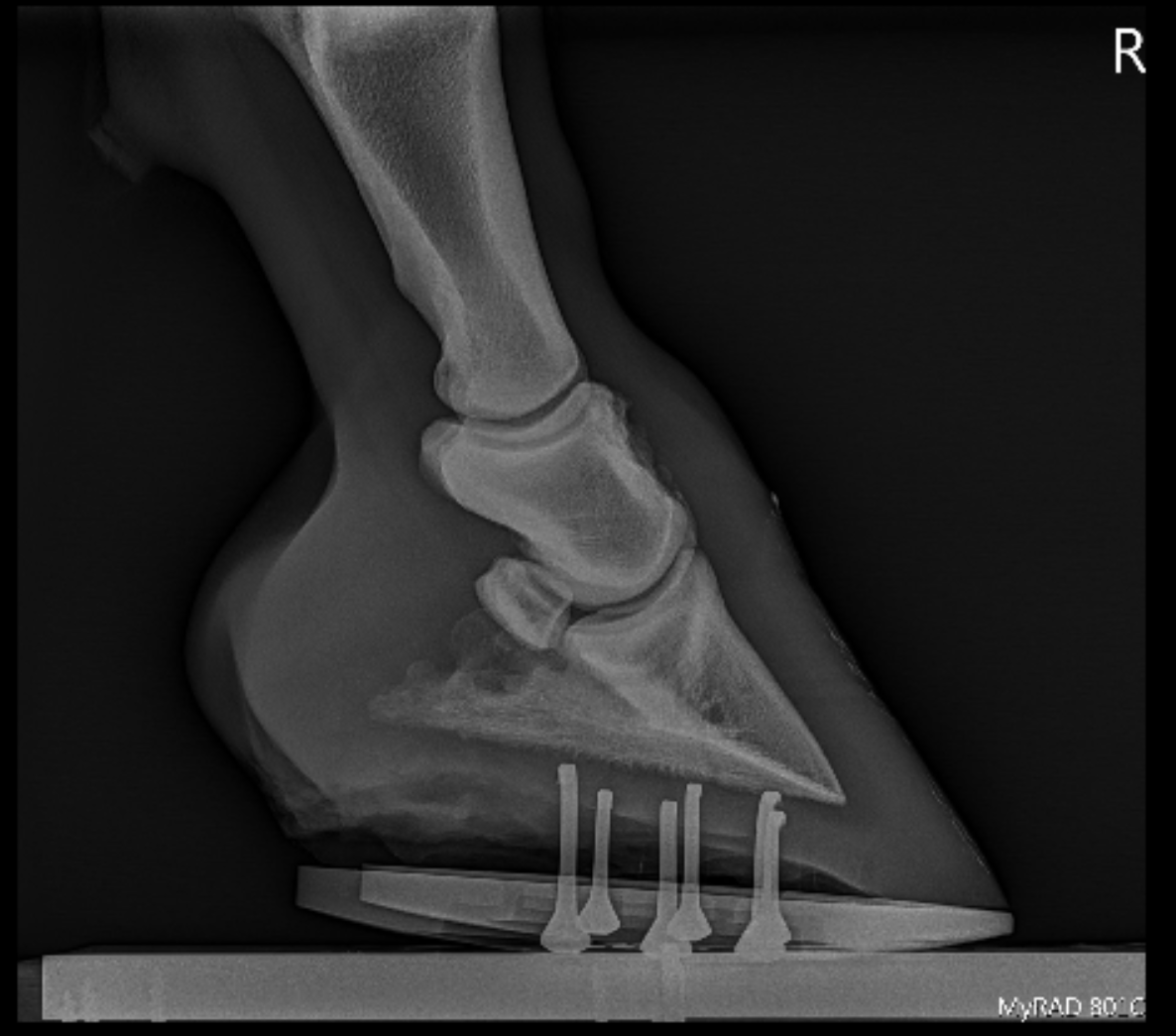



Podiatry Burwash Equine Services




Recognizing Various Grades Of The Club Foot Syndrome
With the club footed horse, the first thing to understand is that the horse has a deformity and as such it is always going to need a high degree of hoof maintenance, for the term of its natural life To identify the club foot we must know what is considered 'normal' and then compare the differenceThis horse found it difficult to stand square or under himself before shoeing In photo 1 you can see the dish in the hoof wall is at or just below the coronary, a grade 3, whereas a dish at or just above the end of the toe would likely be considered grade 1 or 2 This club foot, as seen in photo 2, has very straight medial and lateral wallsClub foot by as early as a 3yo The first photo (top left) was taken in mid 09 when his shoes were removed and shows a totally non functional caudal hoof




Understanding Club Foot The Horse Owner S Resource




28 Club Foot Ideas Club Foot Horse Health Horse Care
Racehorse Easy Goer has a Grade III club foot (which ain't going to help his value at stud) Grade III's are likely to have have significant problems with anything more than the very lightest use Grade IV's are in very bad shapeOften, club foot affects both front legs with one being more severe than the other Club foot can occur before or after birth in foals After birth foals acquire club feet when the bones grow faster than the tendons Treatment varies with the age of the horse and severity of the case Early treatment results in the best prognosisMidwest Horse Welfare Foundation, Inc Discussion Forum Search Midwest Horse Welfare Foundation, Inc > Topics > Corey Arab mare Reply Author Comment Page 2 of 3 Prev 1 2 3 Next Lisa B Posted #26 So happy for Corey and JoAnn!




Figure 3 From Farriery For The Hoof With A High Heel Or Club Foot Semantic Scholar
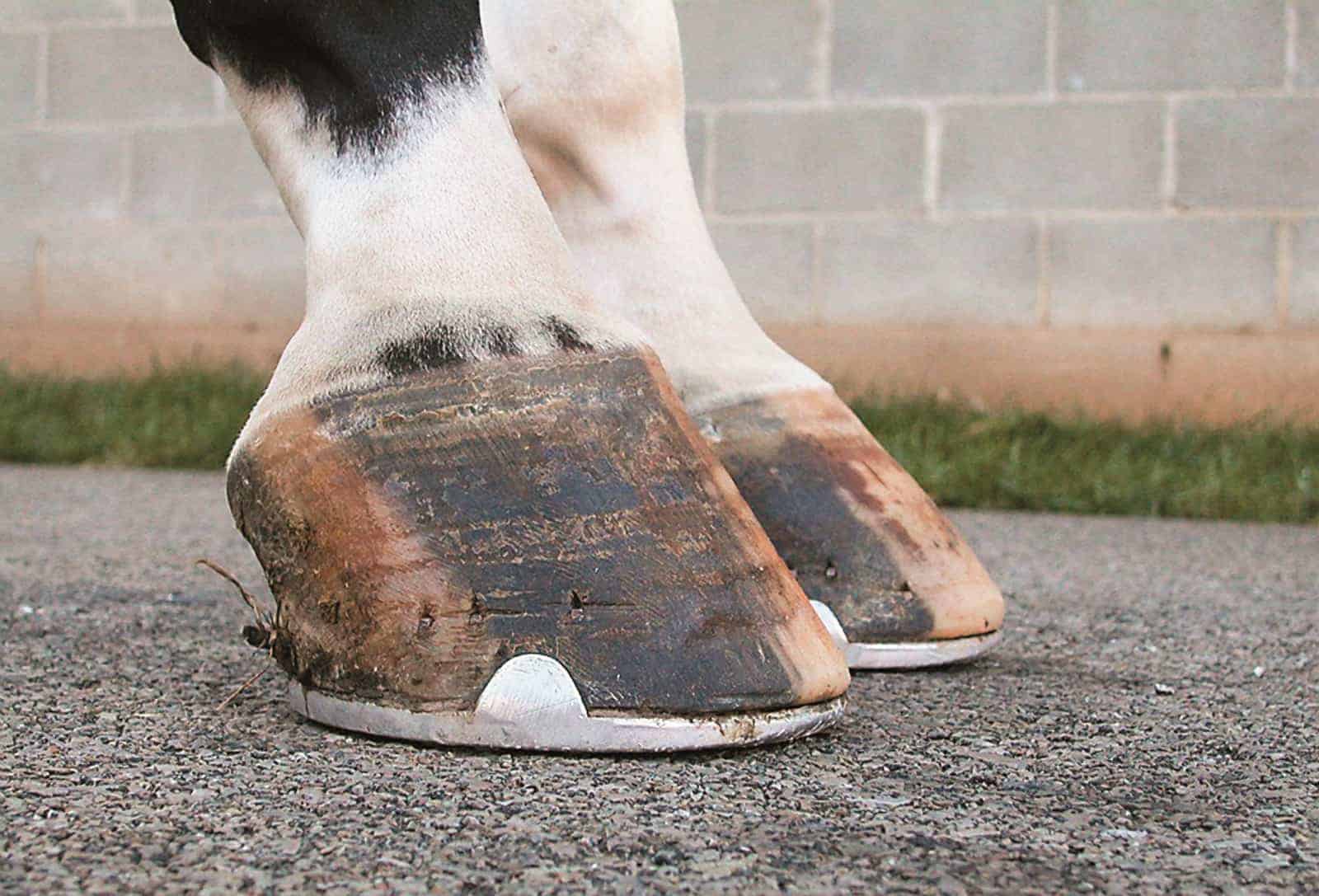



Managing The Club Foot The Horse
Conclusion was , that it is only a grade 2 ,to grade 3 club foot with no sole and has been a few abscess in the pass due to thin sole! An upright foot can be a club foot and vice versa The severity determines the grade and course of action When a club foot is addressed early with nutritional, trimming and shoeing changes and/or surgery, horses can have successful careers Club feet are highly inheritable, although one breed is not more predisposed than anotherGrade 1 is 35 degrees greater than the opposing foot This is the milder case of club foot Grade 2 has a hoof angle of 58 degrees greater, and the heel will not touch the ground when trimmed to normal length Grade 3 club foot has an anterior hoof wall described as dished with the heel twice as wide as the toe




Recognizing And Managing The Club Foot In Horses Horse Journals




Club Foot Syndrome Equinenews Com Au Equinenews Com Au
A club foot is a DEFORMITY and for any horse to win at top level competition it needs every possible advantage and no drawbacks The only way to stop continuing problems with club footed horses is not to breed from them After 11 months of gestation, it is a costly and heart breaking exercise if it results in a club footed foal I have a 6 year old offthetrack TB who has been threelegged lame for 3 months I purchased him sound 5 months ago, but he began stumbling on his club foot after 4 weeks or so of regular work and progressed to being acutely lame (grade 3 or 4 of 5) after the 6th week Grade IV front of coffin bone is vertical or behind the vertical Grades I's and mild II's can often compete without "the bad stuff" starting to occur Racehorse Easy Goer has a Grade III club foot (which ain't going to help his value at stud) Grade III's are likely to have have significant problems with anything more than the very




Understanding Club Foot The Horse Owner S Resource



Www Openveterinaryjournal Com Ovj 19 03 069 l comparini et al Pdf
A grade 3 club foot has a brokenforward hoofpastern axis, often a concavity in the dorsal aspect of the hoof wall, and the growth rings at the heels are twice as wide as those at the toe Club foot case This horse lost the rocker rail shoe applie to the foot opposite the grade 3 club (which is also a club) and regular farrier applied a flat steel keg shoe to keep foot protected Note the horn lamellar zone divergence One could call this rotation which would be non specific The divergence is created by the club syndrome stretching to lower horn to bone A mild club foot may worsen if trimmed infrequently or improperly and by the time the horse is 2 or 3 years old the problem becomes more obvious The horse may develop an uneven stride and rough gait (and some loss of agility) due to the mismatched hoof angles The hoof horn may grow faster at the heel than at the toe, accentuating the problem




How To Treat Club Feet And Closely Related Deep Flexor Contraction
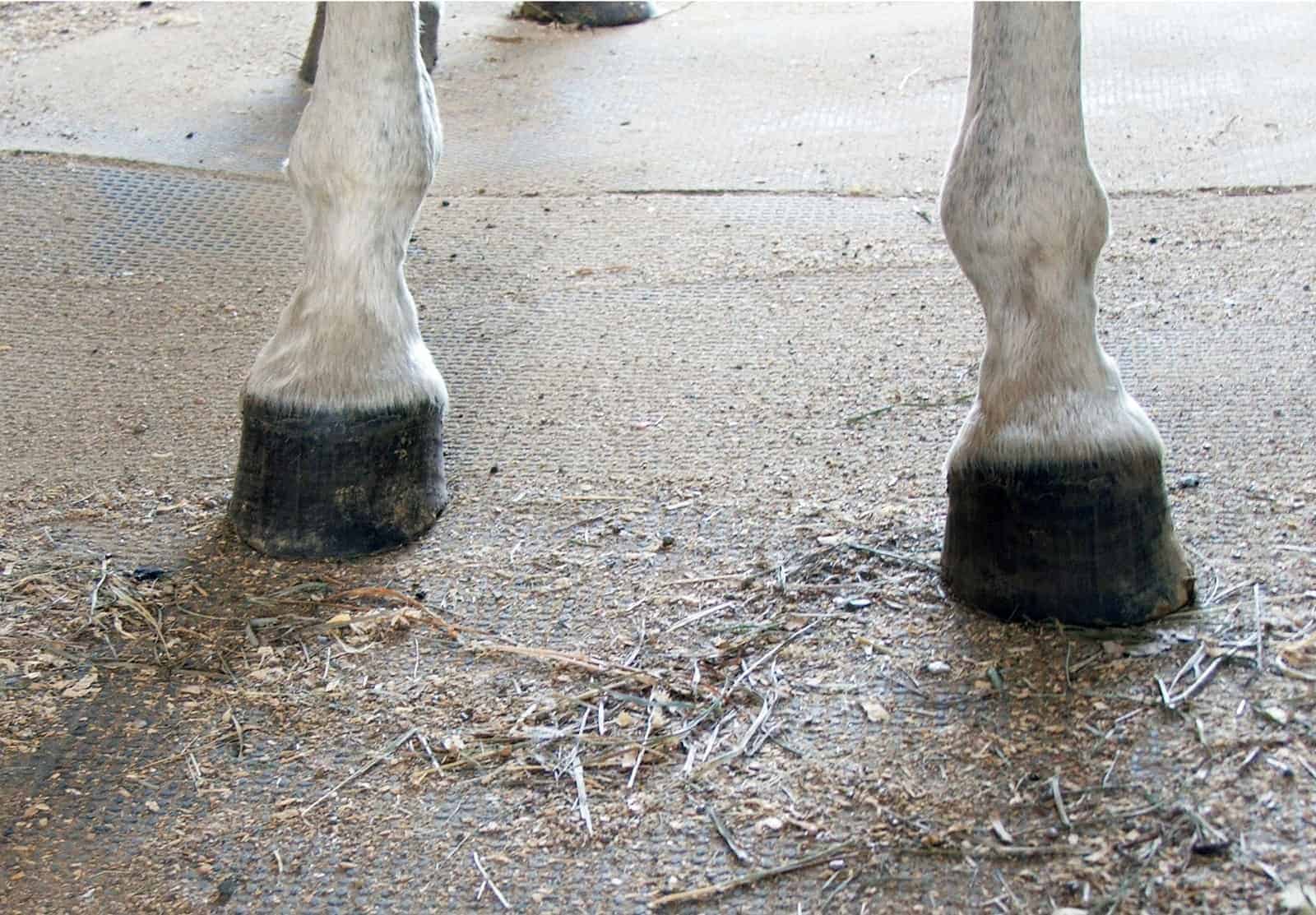



Club Foot Heritability In Horses The Horse
Club foot case recently This particular horse, a six year old gelding, has what I feel is a grade three club foot (on a 15 scale) Apparently the club foot condition has been with this horse since it was a foal This horse found it difficult to stand square or under himself before shoeing January/February 1996The Natural AngleJanuary The remaining four horses each had an abnormal foot conformation (longtoe, lowheel three horses;First we do have the genetic club hoof, the foal is born with it, where P3 is out of alignment with P2 and P1 and displays a steeper angle



Correct



1
A true club foot is significantly more upright than the other hooves, or the angles of both hoof walls are steeper than the angles of the pasterns The severity of the problem is commonly graded on a fourpoint scale Grade 1, the mildest form of club foot, might be so subtle it's hard to spot "A grade 1 might have a three to fivedegree In photo 1 you can see the dish in the hoof wall is at or just below the coronary, a grade 3, whereas a dish at or just above the end of the toe would likely be considered grade 1 or 2 This club foot, as seen in photo 2 , has very straight medial and Picture 1 Grade 4 Club Foot, upright and boxy appearance Picture 2 Slam Dunk Foot, note low heel/long toe Picture 3 LM Radiograph of Grade 2 CFS, note dish in hoof wall Picture 4 LM Radiograph of "Slam Dunk" or counterpart to the Club Foot



Horse Foot



Club Feet The Brutal Truth David Farmilo
Club foot case This horse lost the rocker rail shoe applie to the foot opposite the grade 3 club (which is also a club) and regular farrier applied a flat steel keg shoe to keep foot protected Note the horn lamellar zone divergence One could call this rotation which would be non specific The divergence is created by the club syndromeThere are four grades of club foot Grades 1 to 4 as follows Grade 1 – Only note a difference in the hoof angles that returns with each trim Grade 2 – Greater difference in hoof angles, growth rings begin to change There is an air gap (space between the bottom of the heel and the ground bearing surface heel does not fully weight bear/load on the ground Depends on grade of a club foot if ahorse has a high grade, it can be very difficult to keep him sound This is some info from Dr Stephan O'grady, who is both a vet and a farrier, and specializes in equine podiatry Farriery to correct a high hoof angle accompanied by a flexural deformity becomes more of a challenge




Club Foot Syndrome Equinenews Com Au Equinenews Com Au



Performanceequinevs Com Wp Content Uploads 19 12 Equine Foot Secrets Ebook Compressed Pdf
A grade 3 club foot on a mature horse Note the broken forward hoofpastern axis, the concavity in the dorsal hoof wall, the disparity in hoof wall growth between the toe and the heel and the poor hoof wall consistency distally Figure 3b Shows the frog toOr "club foot" one horse), but the lameness had not been localized to the foot The degree of lameness at initial presentation varied among the study group;A That depends on a number of factors Among these would be what phase of laminitis the horse is in acute, chronic or postchronic The appropriate treatment is dictated by the state of the disease Bottom line, the same principles apply no matter the conformation of the foot




Recognizing And Managing The Club Foot In Horses Horse Journals
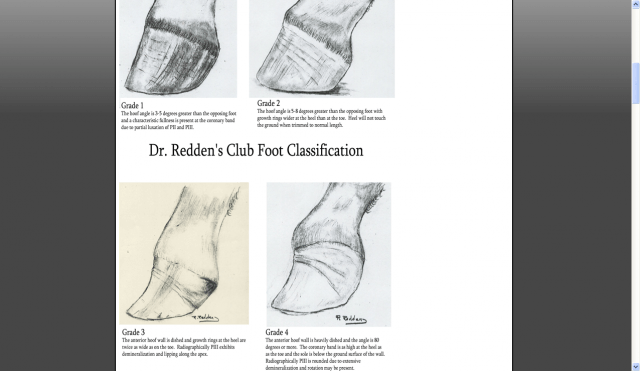



Managing The Club Hoof Easycare Hoof Boot News
Grade 3 Club Feet The hoof wall of a grade 3 is dished and the growth rings are twice as wide at the heel as at the toe The impression of the coffin bone on the sole can be seen clearly, it will be just forward of the apex of the frog The sole shows signs of direct weight bearing as it will be bruised in many cases Example of a club foot The term "clubfoot" gets thrown around a lot when describing the way a horse, particularly a sale prospect, looks with Grade 1 being the mildest form and Grade 4This is my first experience with a club foot and I appreciate all input!



Club Feet The Brutal Truth David Farmilo




Understanding Club Foot The Horse Owner S Resource
Heel or Club Foot Stephen E O'Grady, DVM, MRCVS, APFa,*, Vernon C Dryden, DVM, CJFb A horse with an upright foot with a high heel can fall within the realm of acceptable foot conformation, but this needs to be distinguished from a club foot If measured, an upright foot will have a toe angle greater than 55 , the slope of the horn tubules in Thank you for replying!One consistent feature was that the lameness was chronic, ranging from months to




Club Foot Ronaldmarshall




Shoeing Options For Club Foot In Horses
Club Foot Conformation in Horses Caused by abnormal contraction of the deep digital flexor tendon, a club foot puts pressure on the coffin joint and initiates a change in a hoof's biomechanics Telltale signs of a club foot may include an excessively steep hoof angle, a distended coronary band, growth rings that are wider at the heels He was diagnosed with a grade 3 club foot on the right front, and a grade 2 club foot on the left front In many horses similar to Colonel, we often see remodelling of the tip of the coffin bone from the chronic increased loading, and concussion of the bone due to the increased load on the toe, given the abnormal biomechanics at play Grade 3 Club Feet The hoof wall of a grade 3 is dished and the growth rings are twice as wide at the heel as at the toe The impression of the coffin bone on the sole can be seen clearly, it will be just forward of the apex of the frog The sole shows signs of direct weight bearing as it will be bruised in many cases



Club Foot In Horses
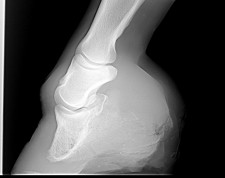



Equine Club Foot
When a horse has a club foot, the horse is reluctant to take up the lead on the affected foot Horses are either right handed, left handed, or ambidextrous From my observations, when horses grow up with a club foot, they condition themselves to favor the normal foot because the club foot is the outcome of the horse's leg bones elongating through growth at a pace that the tendons
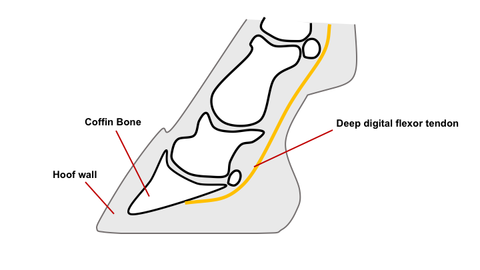



Club Feet In Foals




Recognizing And Managing The Club Foot In Horses Horse Journals




Shoeing Options For Club Foot In Horses
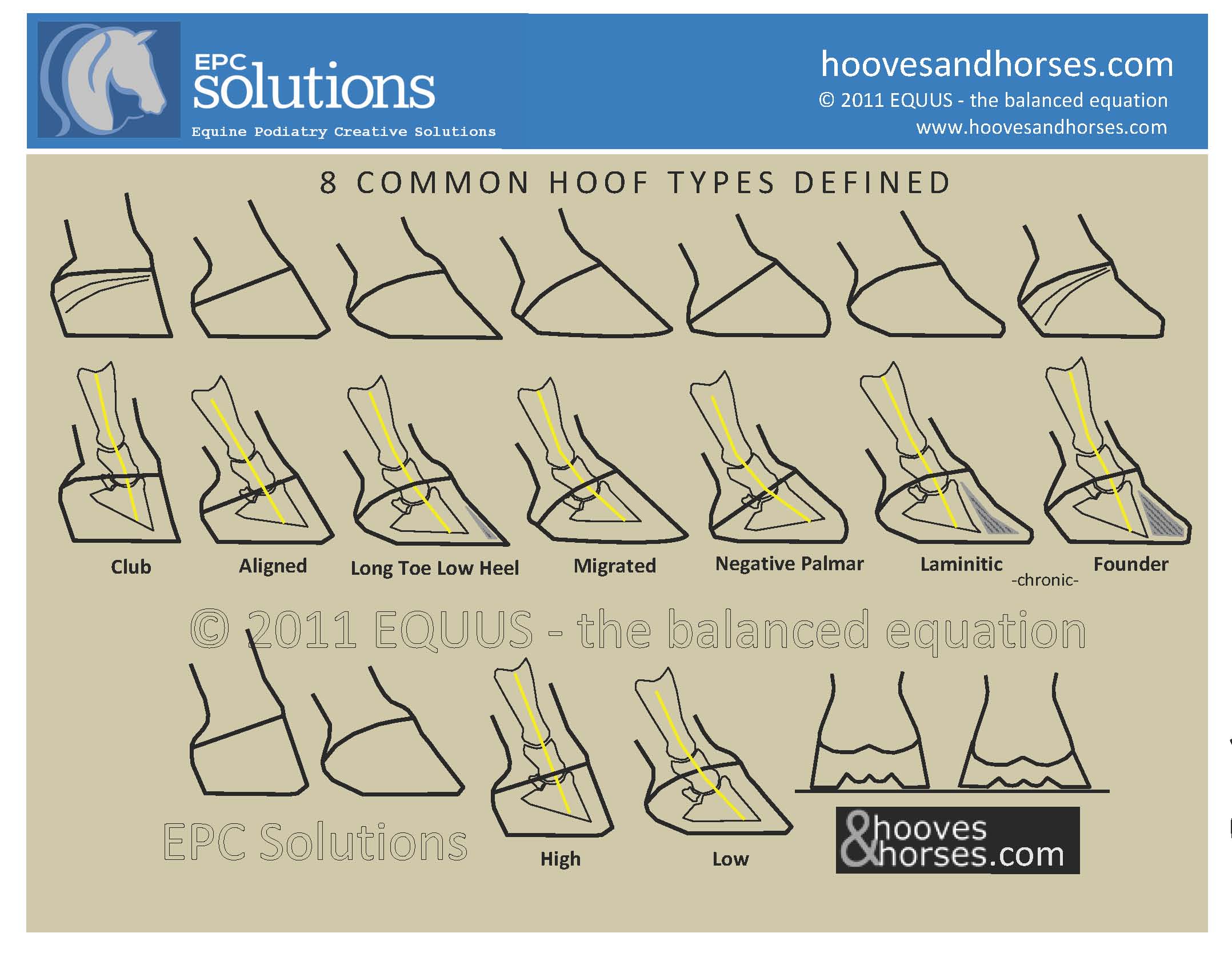



8 Hoof Types Explained
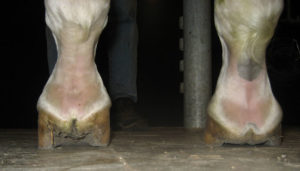



Horse Hoof Irregularities Club Foot Integrity Horse Feed




Understanding Club Foot The Horse Owner S Resource
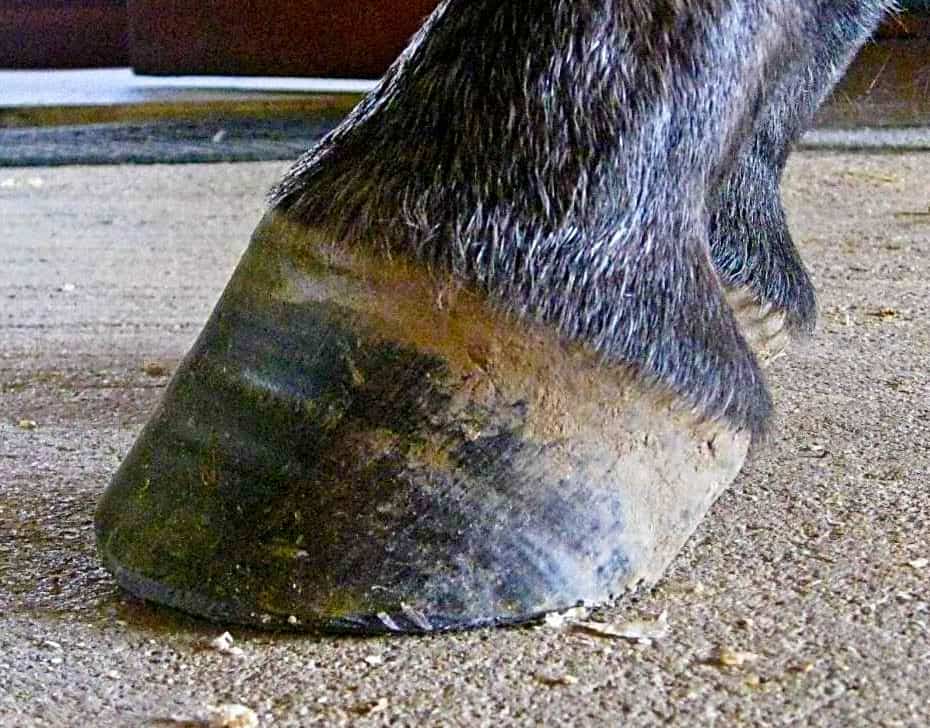



The Tolerable Club Foot The Horse




Recognizing And Managing The Club Foot In Horses Horse Journals




Recognizing And Managing The Club Foot In Horses Horse Journals



Www Theneaep Com S Xia1nkm5hdp7yhwyucxfn39k42qa8m



Lesson 4



Barehoofcare Com Wp Wp Content Uploads 15 07 Club Foot Pdf




Club Foot Rehabilitation Act Trimming Strategy
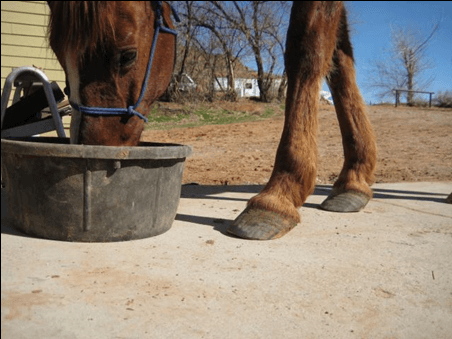



Managing The Club Hoof Easycare Hoof Boot News




Innovative Equine Podiatry Ric Redden Dvm Follow Up Clinic 6wks Rechecks




Recognizing Various Grades Of The Club Foot Syndrome



Equine Podiatry Dr Stephen O Grady Veterinarians Farriers Books Articles
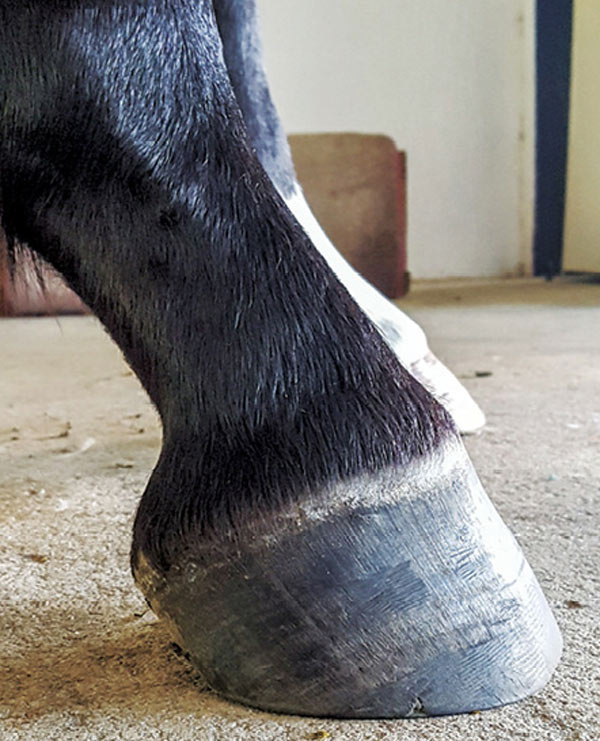



Club Foot Or Upright Foot It S All About The Angles American Farriers Journal




Passing The Club Foot Exam American Farriers Journal
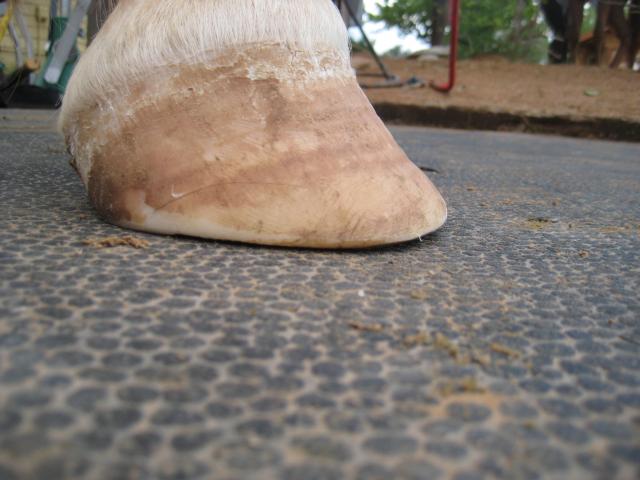



Managing The Club Hoof Easycare Hoof Boot News



Club Foot In Horses Equine Chronicle




Innovative Equine Podiatry Ric Redden Dvm Follow Up Clinic 6wks Rechecks




Recognizing And Managing The Club Foot In Horses Horse Journals




Conformation Faults Involving The Hoof Club Foot Vet Med Hooves




Club Foot In Horses Symptoms Causes Diagnosis Treatment Recovery Management Cost




Living With Clubfoot What Shoes I Wear As An Adult




Ballerina Syndrome Where The Heels Remain Off The Ground Even At The Download Scientific Diagram



Club Foot In Horses Equine Chronicle



So Called Club Foot By James R Rooney Dmv




Shoeing Options For Club Foot In Horses




Understanding Club Foot The Horse Owner S Resource




The Club Foot Is It No Big Deal Or A Deal Breaker




Horse Club Foot



Club Foot Definition The Horse Forum
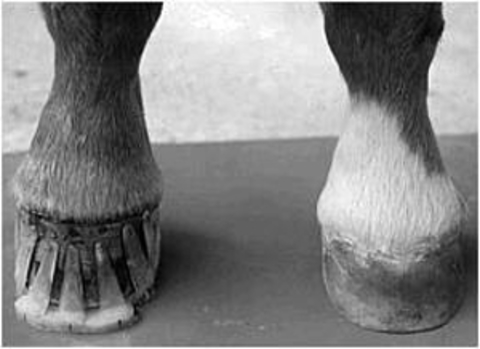



Club Feet In Foals
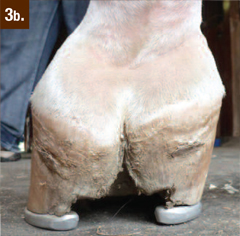



Equine Therapeutic Farriery Dr Stephen O Grady Veterinarians Farriers Books Articles



Equine Podiatry Dr Stephen O Grady Veterinarians Farriers Books Articles




Recognizing Various Grades Of The Club Foot Syndrome
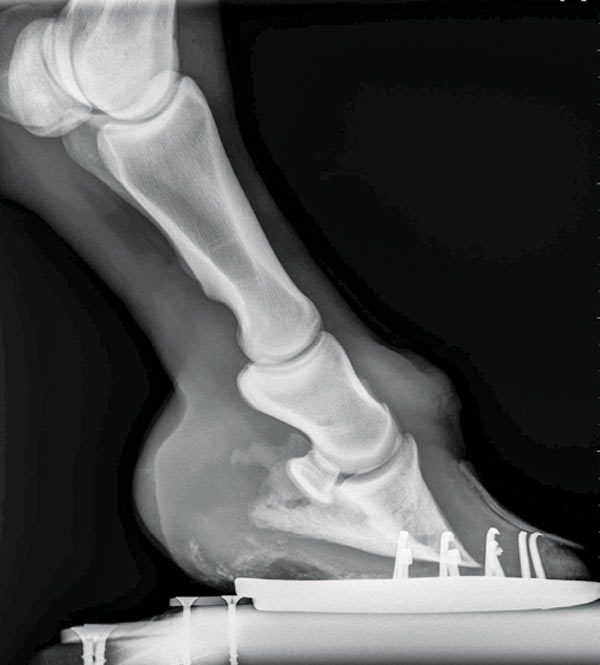



Club Foot Or Upright Foot It S All About The Angles American Farriers Journal



1




Defining And Fixing A Horse S Club Foot American Farriers Journal
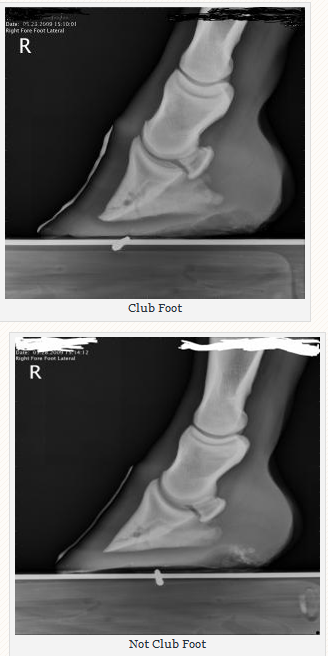



Managing The Club Hoof Easycare Hoof Boot News




Recognizing Various Grades Of The Club Foot Syndrome



ep Org Sites Default Files Issues Proceedings 12proceedings In Depth The Foot From Every Angle Hunt Pdf




Shoeing Options For Club Foot In Horses




Recognizing Various Grades Of The Club Foot Syndrome




Club Foot In Horses Brian S Burks Fox Run Equine Center Facebook




Ballerina Syndrome Where The Heels Remain Off The Ground Even At The Download Scientific Diagram
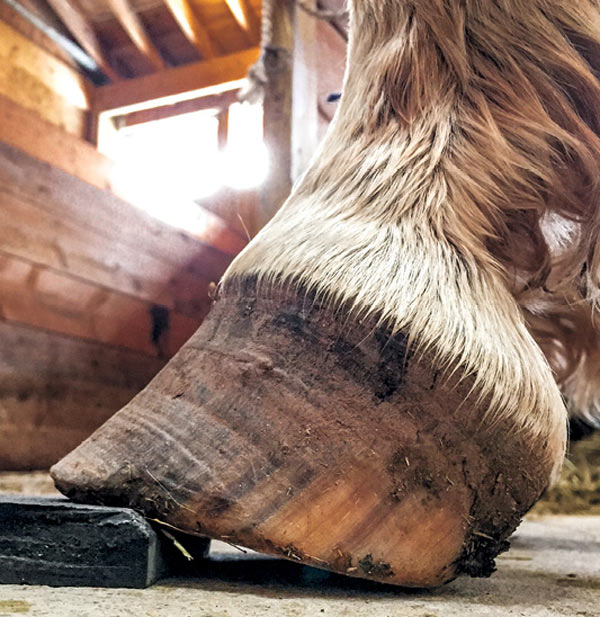



Club Foot Or Upright Foot It S All About The Angles American Farriers Journal




Club Foot Just How Sore Is Your Horse Casey Son Horseshoeing School



Club Foot




Hoof Conformation Vs Horse Conformation Scoot Boots Us Retail




Recognizing And Managing The Club Foot In Horses Horse Journals



Www Theneaep Com S Xia1nkm5hdp7yhwyucxfn39k42qa8m




What Causes Club Feet American Farriers Journal



Club Foot
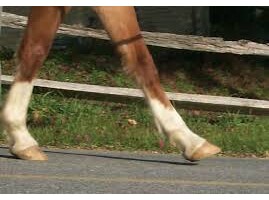



Animal Mrt Effect Of Hoof Distortion On Muscoskeletal Issues




Passing The Club Foot Exam American Farriers Journal



Club Feet The Brutal Truth David Farmilo




3 Top Tips For Choosing A Dressage Horse




Recognizing And Managing The Club Foot In Horses Horse Journals



Www Theneaep Com S Xia1nkm5hdp7yhwyucxfn39k42qa8m



Performanceequinevs Com Wp Content Uploads 19 12 Equine Foot Secrets Ebook Compressed Pdf
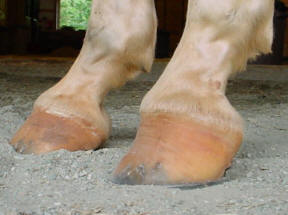



Club Foot




Club Foot In Horses Brian S Burks Fox Run Equine Center Facebook




Understanding Club Foot The Horse Owner S Resource




Webinar Shoeing The Club Footed Horse Youtube



Is This A Club Foot Horsetalk Co Nz



Www Theneaep Com S Xia1nkm5hdp7yhwyucxfn39k42qa8m



Club Foot Definition The Horse Forum



Equine Podiatry Dr Stephen O Grady Veterinarians Farriers Books Articles



ep Org Sites Default Files Issues Proceedings 12proceedings In Depth The Foot From Every Angle Hunt Pdf




A Club Foot Is Caused By Mobile Equine Diagnostics Inc Facebook



Club Foot



Shoeing News Club Grades Harness Racing Newsroom Usta Ustrotting




Pdf Survey Of The Occurrence Of Equine Deep Digital Flexor Tendon Contraction Clubfoot In The Main Thoroughbred Breeding Area In Japan Semantic Scholar



0 件のコメント:
コメントを投稿